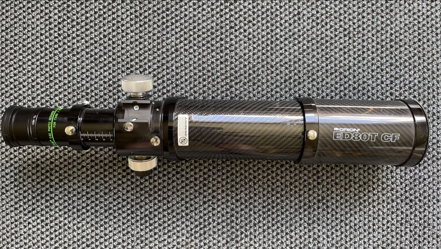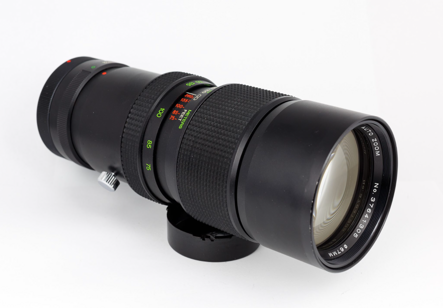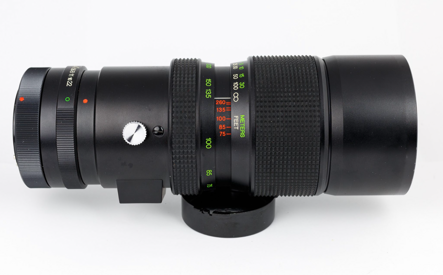I managed to get a little funding from the CFO (Sheryl) so I bought an Orion ED80T CF 80mm Carbon Fiber APO Triplet Refractor Telescope. The scope has a carbon fibre body which makes it attractive and light.

So, why this scope?
My main OTA (optical tube assembly) is a Celestron 11″ EdgeHD which has a focal length of 2800mm and a focal ratio of f/10. I also have a focal reducer (F7), and I can also use the scope in F2 using a Starizona Hyperstar accessory, which makes it pretty versatile but there are different types of telescopes and they all have pros and cons.
In my case I wanted a triplet refractor to compliment the Schmidt-Cassegrain 11″ EdgeHD, so that I can get some better deep-sky photos at a lower focal ratio. An advantage of the triplet refractor is that the images are razor sharp and have no chromatic aberration. Making this scope great for visual as well as colour imaging.
One of the disadvantages of a refractor is that you need to ‘flatten’ the image. The 2nd hand scope I purchased came with a Televue 0.8x Reducer/Flattener converts the scope from 600mm f6 to 480mm f/5.6 for flat field, fast photography. The fully multi-coated 3-element unit with 48mm filter thread inserts directly into 2″ focuser. “This accessory is a must-have for someone planning to use the telescope photographically” – review in Sky & Telescope, July 1999. It can be used with any 400-600mm refractor.
I got an amazing deal on the scope, Trademe, $1010. Brand new this would cost $2100 and the flattener/reducer goes for another $500, so all up, $2.6k of gear for $1k. And it’s in great condition!
So this scope will let me image at f/5.6. Which is a focal length I haven’t been able to do until now, with a different style of scope to suit different imaging requirements.
Around the same time as I purchased the Orion ED80T CF, I was trying to image the Andromeda galaxy (M31), which is a particularly challenging target in NZ because it doesn’t get over the horizon by much ~1%! What I found was the Andromeda galaxy is massive, it’s far too large for my existing scopes, and in fact, the recommended method is to use a 230mm focal length – basically a lens for a camera.
So I made another purchase on Trademe and picked up a Vivitar Auto Zoom 75-260mm f/4.5 lens. This is an older lens that is a manual focus, but it’s the perfect focal length/ratio for larger targets like the Andromeda galaxy. I also picked up an adapter so I can use it with my astronomy cameras, a bargain at $73!



Mounting
They both arrived on the same day, and then the next challenge… how to mount them?.
The Orion came with a vixen style ‘shoe’ mount, and I have a Losmandy dovetail on the top of my EdgeHD 11″. So I removed the Orion mount and instead used the 125mm guide scope ring mounting system, which actually worked really well.
The Vivitar lens required a bit of creative thinking, I managed to fashion a bracket from a finderscope mount, and a bit of aluminium I had on hand, I drilled a hole and used a connecting screw to mount the 3 bits together and a further screw to mount the contraption to the OTA. A bit dodgy, but that’s how I roll.
Final mounted pics



I had to use a wide setting on the iPhone, so excuse the fish-eye effect!.
Can’t wait to try em out now! – Kirk out.
